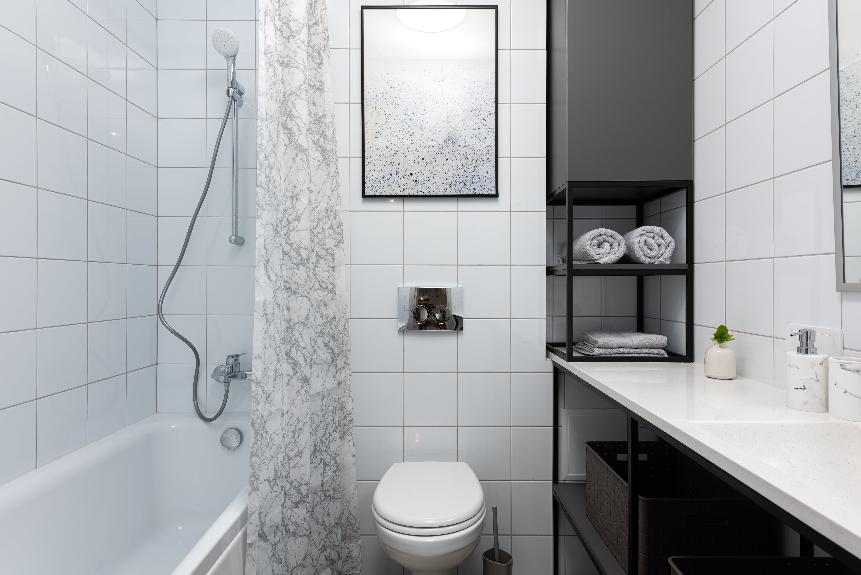You can paint bathroom grout. Grout often becomes discolored, especially in damp areas like bathrooms. Painting grout is a cost-effective alternative to complete replacement. Use paint made for grout to ensure it sticks and protects against moisture and mold.
Grout painting refreshes the look of a bathroom without a full remodel. This guide will cover choosing the right paint and tools, how to apply the paint, and how to maintain it.
Understanding Grout Paint
Grout paint is a product composed of latex, fillers, and pigments, designed to change the color of grout lines on tiled surfaces. It comes in various colors to match different design preferences. Before applying grout paint, it is crucial to clean the surface thoroughly to ensure good adhesion.
To apply the paint, one should use a small brush or a grout pen for precise application. The paint should be applied carefully to the grout lines, avoiding the tiles. Any excess paint on the tiles must be wiped off before it dries.
Grout paint can refresh a tiled area and cover up stains or discoloration. It is an affordable way to improve the look of a space. Following the manufacturer's instructions is important for the best outcome and durability. These instructions will include preparation, application, drying times, and if additional coats are needed.
Regular cleaning and resealing may be necessary to maintain the appearance of the painted grout. Grout paint is not permanent, but with correct application and maintenance, it can last for a significant period and enhance the look of tiled areas.
Benefits of Painting Grout
Painting bathroom grout rejuvenates tile appearance without extensive renovations. It covers stains and restores tile beauty quickly, unlike the lengthy process of re-grouting or tile replacement.
Grout paint is cost-effective, saving money compared to more labor-intensive alternatives. Homeowners can apply it themselves, reducing labor costs and providing DIY satisfaction.
Grout paint also offers color customization options. A range of colors allows for matching or contrasting with tiles, giving personalization to the bathroom's design.
Additionally, painting grout extends its life by adding a protective layer that seals and makes it easier to clean, thus preserving the bathroom's tiled areas.
Necessary Painting Supplies
To paint bathroom grout effectively, you need the following supplies:
- Grout-specific paint: Select a paint designed for grout to ensure good adhesion and resistance to bathroom moisture. This paint can refresh the grout's color and protect against mold and mildew.
- Foam brush: Use a foam brush for precise application to avoid applying too much paint to the grout lines.
- Tapered tool: Have a painter's tool or a plastic putty knife on hand for detail work in small areas and for removing any paint that gets on the tiles.
- Toothbrush: Clean the grout with a toothbrush to remove dirt before painting.
- Painter's tape: Use painter's tape to cover tile edges and keep the paint on the grout lines only.
- Clear liquid sealer: After painting, apply a sealer to protect the paint and create a waterproof layer, crucial in a moist environment.
These supplies are necessary for a successful bathroom grout painting project.
Step-by-Step Painting Guide
Prepare your painting supplies and ready the bathroom grout. Begin by mixing the grout colorant thoroughly. Apply the colorant to the grout lines with a small brush or grout pen, working in small sections for even coverage.
Be cautious of colorant on the tiles; wipe away spills with a damp cloth to maintain cleanliness. After finishing a section, clean your brush or pen before continuing, especially when switching colors or if the colorant starts to dry.
Allow the grout to dry completely, following the manufacturer's recommended drying time, which varies with humidity and ventilation. For high traffic areas, a second coat may be needed for a consistent and lasting finish. Apply as before, cleaning any spills.
To keep the painted grout in good condition, touch up as needed, particularly in frequently used areas. Over time, a full reapplication might be necessary to restore the appearance. Regular, careful cleaning can prolong the life of the painted grout.
Maintaining Painted Grout
To maintain painted grout in a bathroom, clean it regularly with gentle, non-abrasive cleaners. Use grout paint to ensure it adheres well and can withstand cleaning. Use pH-neutral cleaners to avoid affecting the color and finish of the painted grout.
Clean the grout in sections to be thorough and prevent buildup. Use soft cloths or sponges to avoid scratching the paint. For tough stains, apply a mild grout cleaner, let it sit, then gently wipe it off.
Touch up chipped or faded paint as needed. Reseal the grout every few years to protect against stains. Ensure good ventilation and moisture control to prevent mold and mildew.
Removing Grout Paint
To remove grout paint from a bathroom, begin by using a toothbrush to scrub the area gently, which helps remove any loose paint without harming the tiles. Grout paint can wear over time, especially in high-traffic areas, and may need to be taken off for updates or to replace discolored grout.
Once the excess paint is scrubbed off, clean the grout lines to remove dirt and debris. Use a gentle cleaner that won't damage the grout or tiles. Pay extra attention to areas with hard water deposits, mold, or mildew, as these can interfere with the adhesion of new grout or paint.
After cleaning, if there are additional steps for removing the grout paint, follow the instructions provided with the original product. If a new grout colorant is to be applied, a clear liquid sealer might be needed to protect the grout after cleaning. Use tools that fit the grout line size and follow drying time recommendations from the manufacturer to ensure a successful removal and application process.





